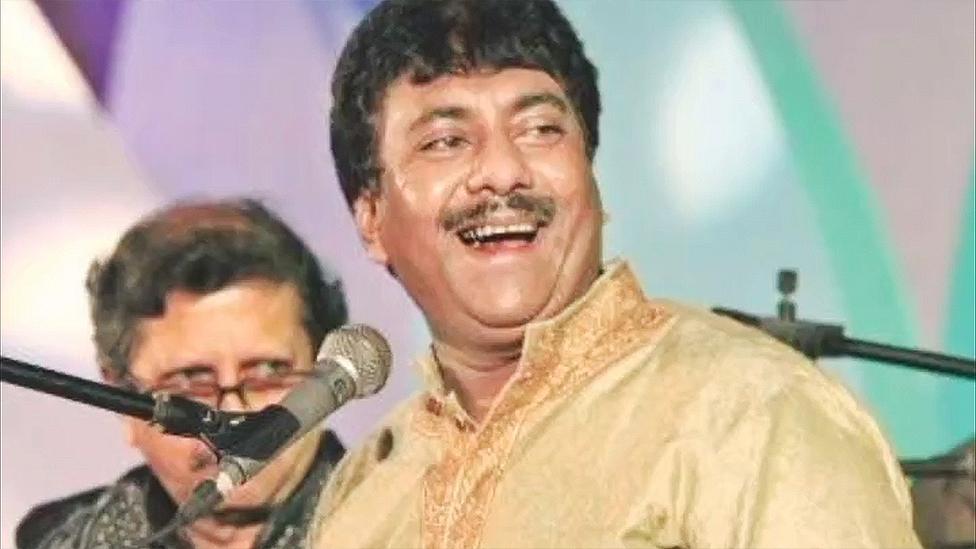Sikh music recognition will 'help people understand'
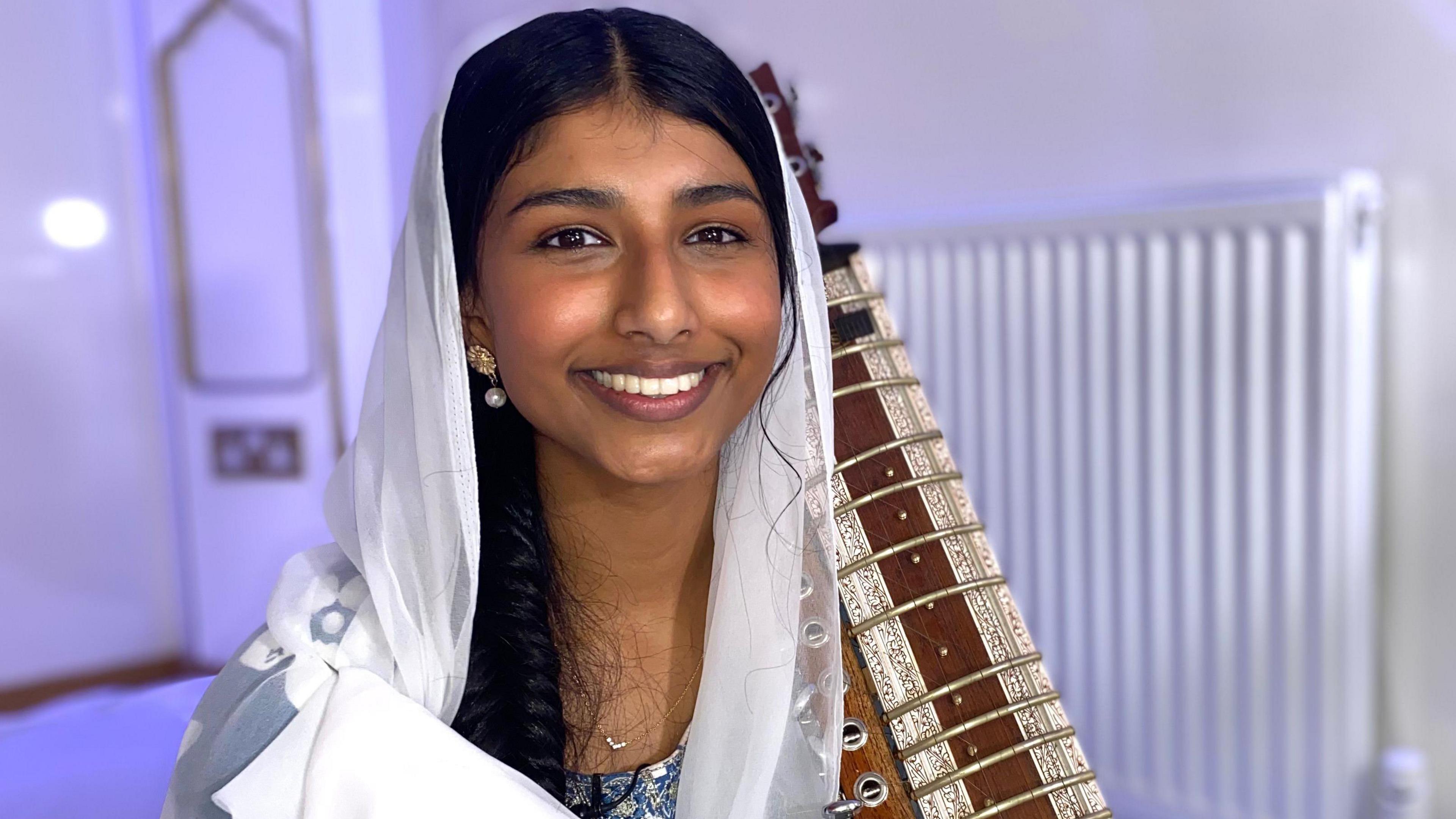
Avneet Hayer called Kirtan a "spiritual experience"
- Published
A musician has said Western exam boards’ formal recognition of Sikh sacred music will help more people to understand her passion, and her talent.
Student Avneet Hayer, from Coventry, learned to play the dilruba to help ease her anxiety but said many people were unaware of the style of music.
Until recently, the 18-year-old was unable to gain formal qualifications in the sacred music, which is also known as Kirtan.
But following a decade-long campaign to get it recognised, exam boards have now included it on the eight-grade syllabus and it will be examined alongside violin and percussion.
"A lot of the times when I explain to my friends and my teachers I play the dilruba, they ask: 'What's that?'" Miss Hayer said.
The musician described performing and singing Kirtan with other girls like a sisterhood that was able to touch people's hearts.
She also hoped that more young people, especially women, would be inspired to take up the instruments.
Like with other music exams, those who achieve grades six to eight receive Ucas points, which can go towards entry requirements for UK universities.

Harjinder Lallie was "absolutely determined" to create music classifications for traditional Sikh instruments
The 10-year campaign to get the devotional music recognised was led by Harjinder Lallie, the co-director of Birmingham-based Gurmat Sangeet Academy.
He said it had been a "long and tedious journey from where we started to where we've got to today".
His efforts have also been recognised by the chief Sikh authority in the Punjab, The Akal Takt, which said it was a "proud achievement for the entire Sikh community".
For the 130 students at the academy, and around the world, it is a step towards getting a formal value out of their passion from learning the sacred music.
So far, five Indian string instruments - dilruba, taus, esraj, sarangi and saranda - can be studied.
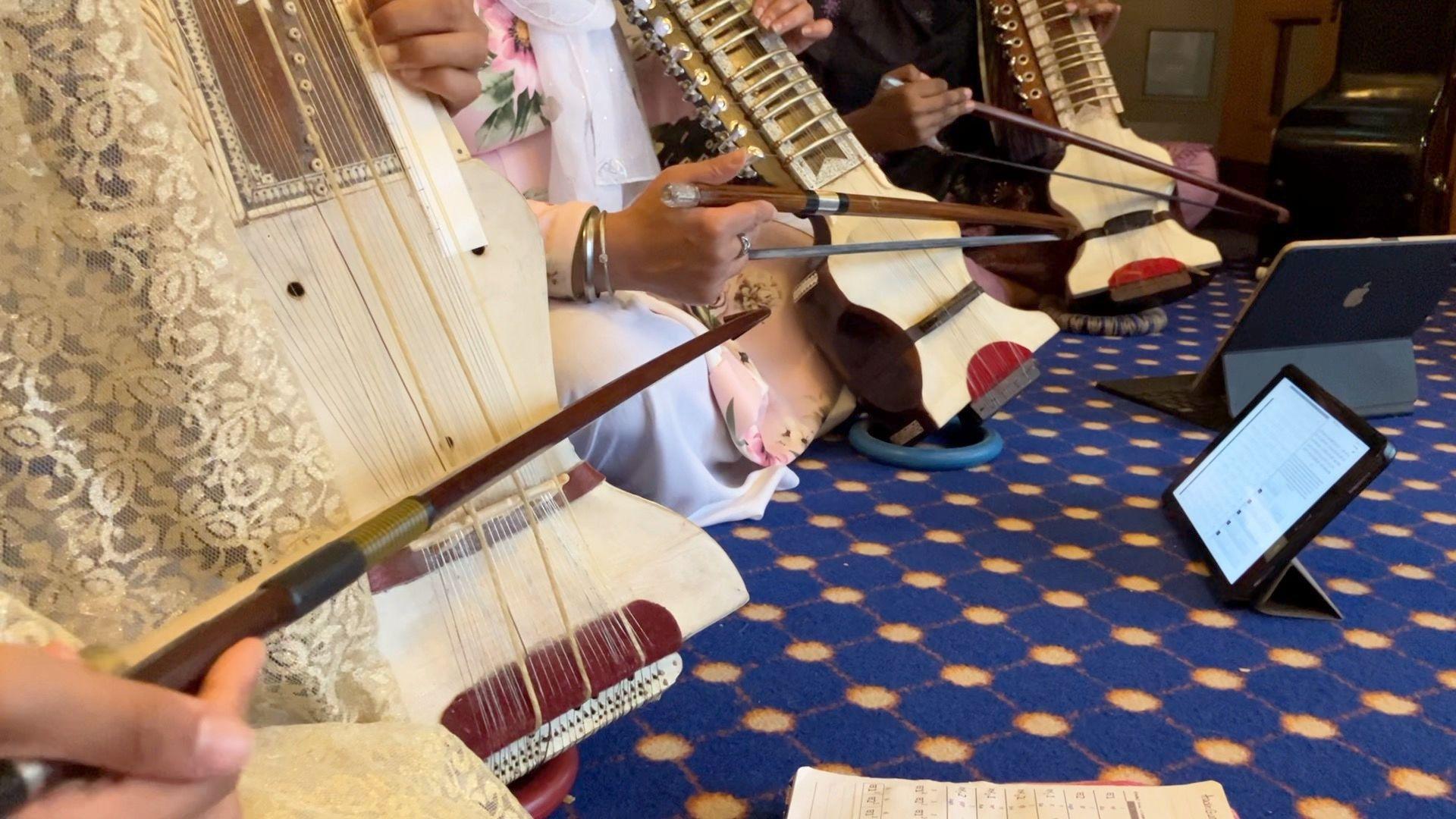
The academy plans to introduce more traditional Sikh instruments to the syllabus
During the exam launch at Guru Nanak Gurdwara in Smethwick, Mr Lallie said: "Kids have been learning Kirtan all their lives thinking 'oh I haven’t got anything out of this', but now all that changes."
Many students start learning to play kirtan from childhood, like Mr Lallie's 13-year-old daughter, who began to learn the sarangi at five years old.
She said being able to get qualified gave her a "higher purpose".
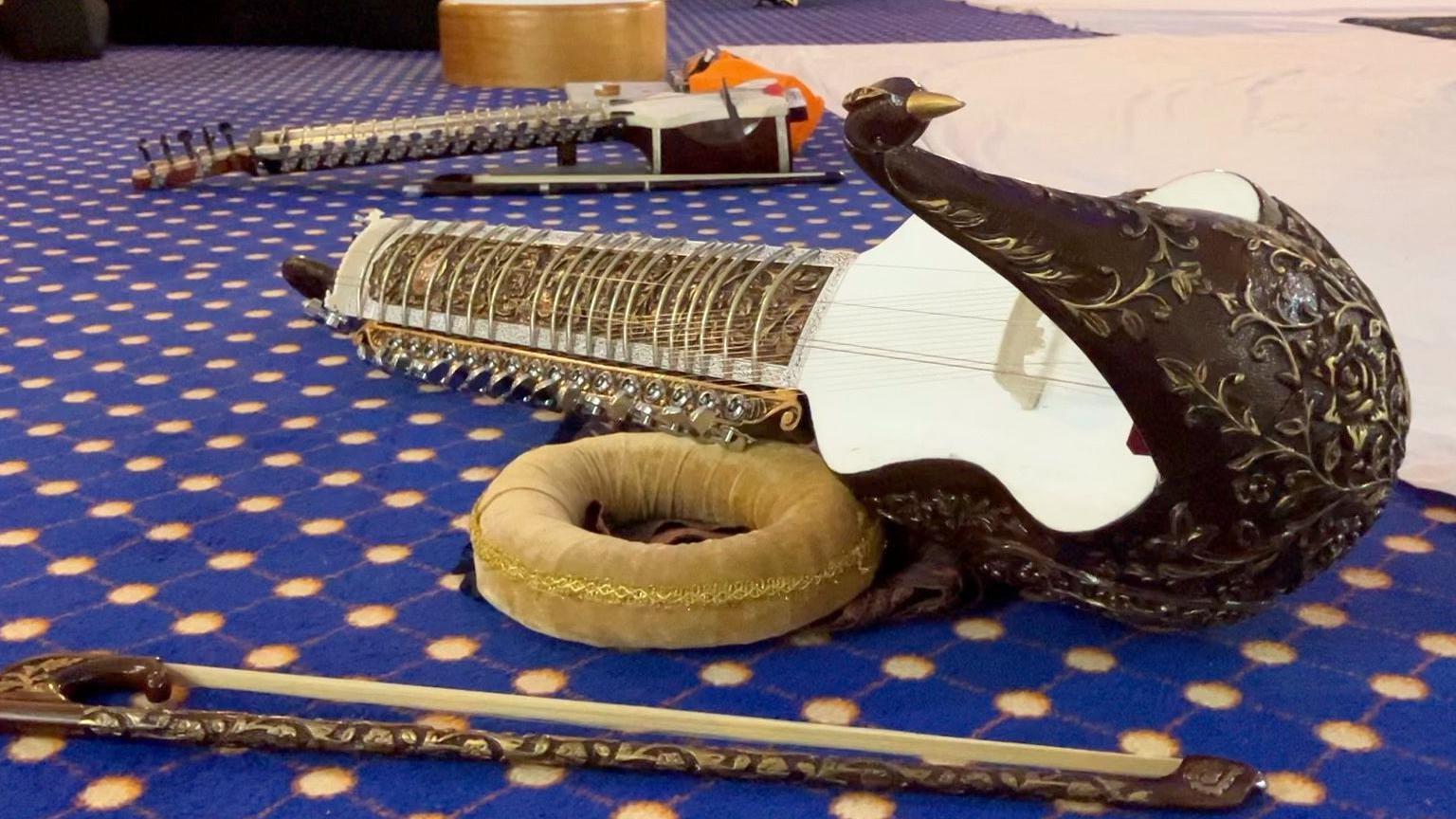
The academy plans to introduce more traditional Sikh instruments to the syllabus
The Music Teachers' Board introduced the examination with co-founder David Kesel saying they want to "branch out" from colonial traditions of simply grading Western classical and contemporary music.
Mr Kesel said: "It is the first time that anyone has been able to examine and accredit Sikh sacred music."
The board worked with the academy in creating the syllabus, with Mr Lallie spending countless hours with many teachers, transforming generational knowledge into a rigorous syllabus.
Since the first launch of the exams at Sri Guru Singh Sabha in London, Mr Lallie said it had been "overwhelming" to keep up with the demand of new students who wanted to learn the instruments.
The exams are available online for pupils across the globe, with schools in India and the United States already expressing an interest in submitting their students.
Related topics
- Published18 September 2024
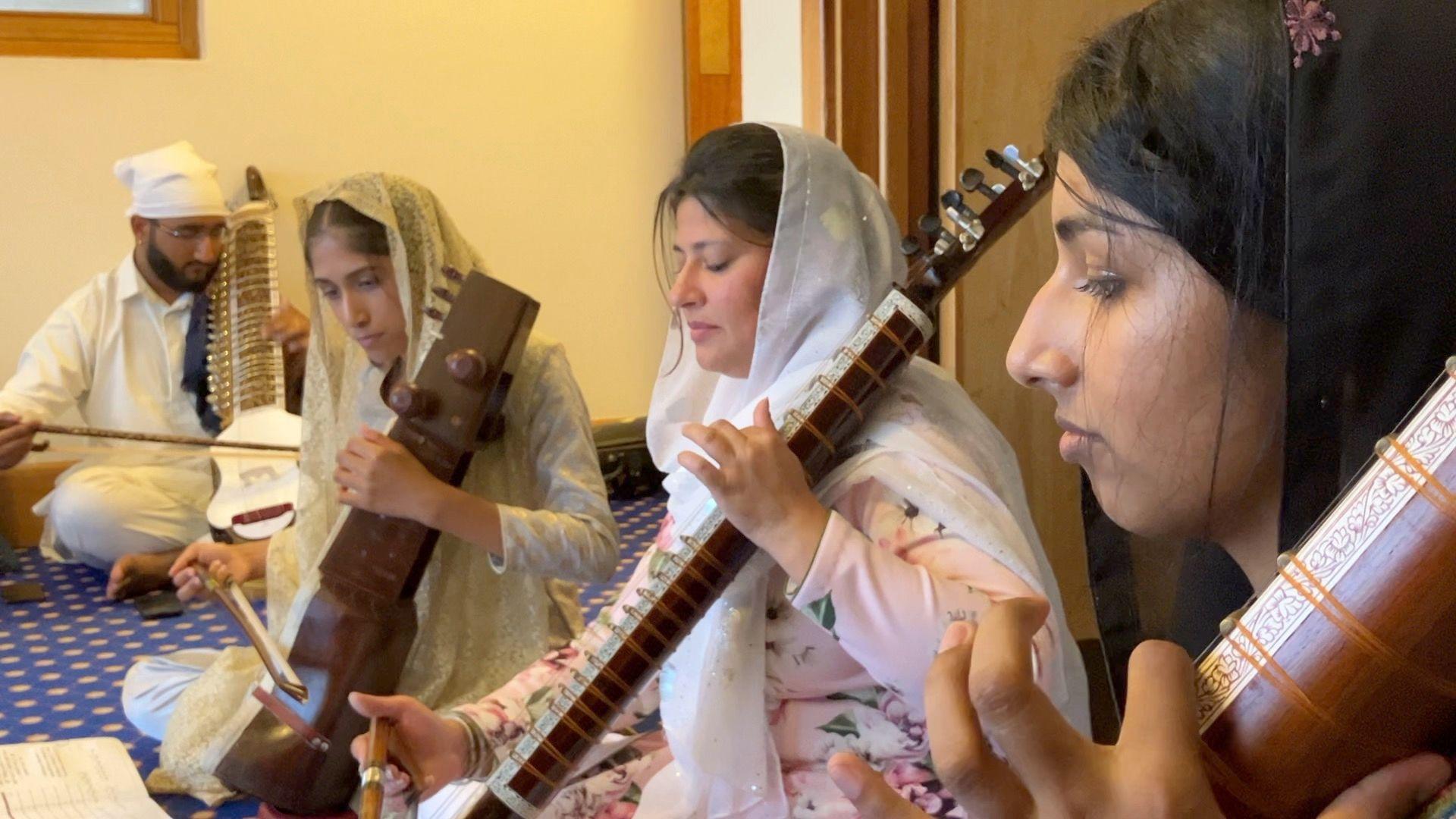
- Published13 January 2024
